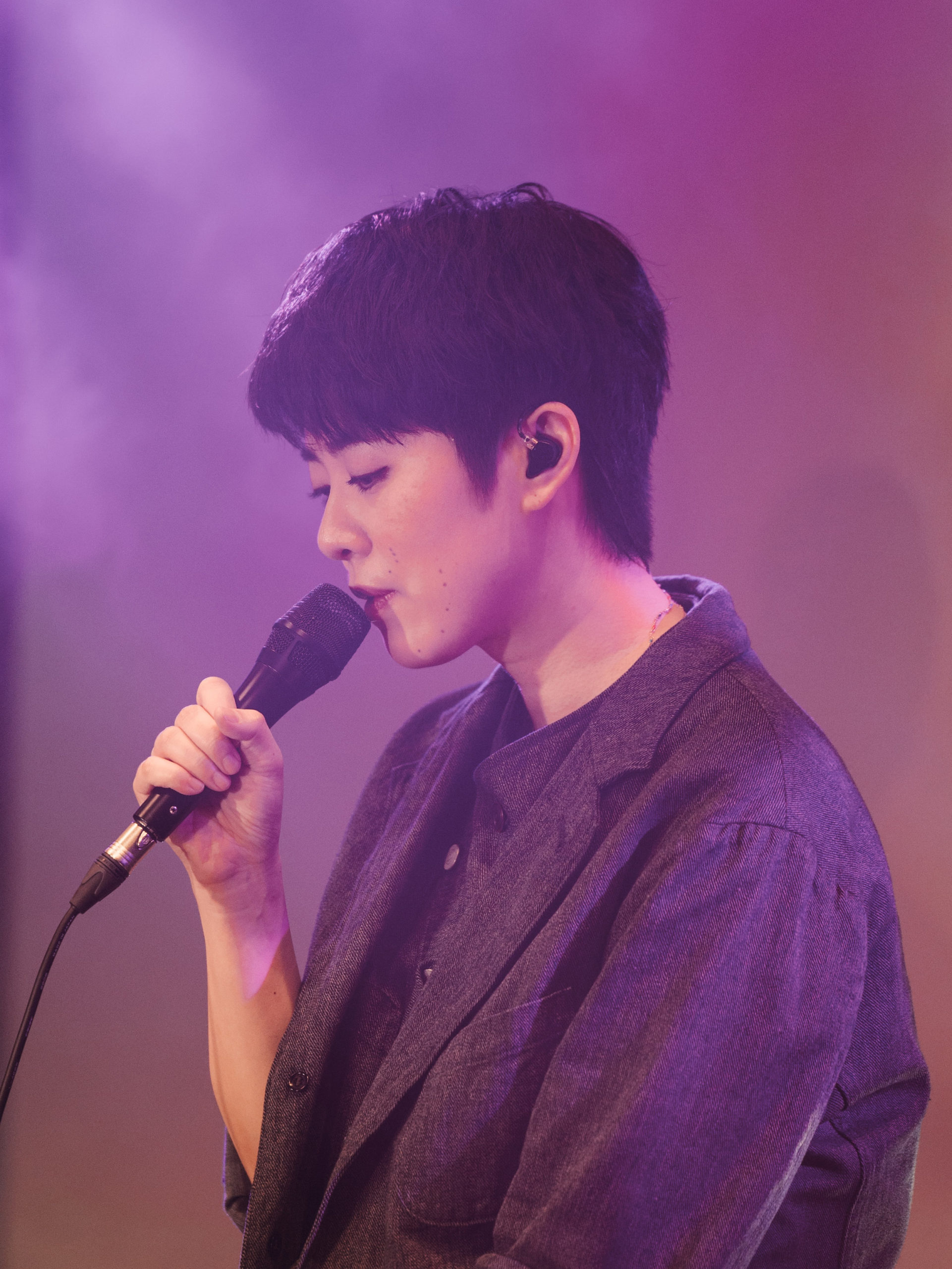Seems Like Magic
by Yvonne Lau
Amid the glitz and glamour of Asia’s contemporary music scene, Yoyo Sham (BA ’05) is something of an anomaly. With her pixie haircut framing her face like a halo of rebellion, she typically swaths herself in oversized, white men’s shirts, downplaying her celebrity status as a singing sensation who plays to sold-out arenas in Beijing and Taipei. Sitting down to do this interview via Zoom from her home in Hong Kong, she exudes an authentically unfussy aesthetic, dressed in a simple black hoodie while speaking of home, family and the pleasures of the simple life.
“I feel most at ease when I go to the same place, eat the same food and meet the same people,” Sham says.
I have tried to discover and develop my own sound, trusting that there is a place for me
Yet beneath that understated demeanour lies a powerhouse talent in Cantopop, a genre of popular music originating from Hong Kong in the 1980s, characterized by its fusion of Cantonese lyrics with elements of Western pop, rock and ballad styles. Anthony Fung, editor of Asian Pop Culture: The Global (Dis)continuity, identifies Sham as one of the bright lights in Cantonese pop today. Cantopop icon Sandy Lam says that Sham’s voice is “the most beautiful” she has heard in years.
In her lyrics and performance style, Sham is unapologetically real, which endears her to fans. At a December 2023 Taipei show, the singer broke down in tears several times, telling the audience that “performing these songs felt like reading my diary and seeing myself many years ago.”

Her soulful melodies evoke feelings of longing and nostalgia, inviting listeners to reminisce about moments of love, loss and introspection.
“I have tried to discover and develop my own sound, trusting that there is a place for me,” Sham says.
Sham’s musical journey began at York University in 2002, where she pursued cultural studies. Toronto became a second home, shaping her into the artist she is today. Despite hailing from a family of notable figures in the entertainment industry (her parents are actor and film producer John Shum and actress Tina Lau), Sham consciously chose not to leverage her background for advancement. She insisted on following her own path.
Sham’s York years typified Canadian student life: she chowed down on Taco Bell and butter chicken, and commuted to campus via the TTC, even during Toronto’s deep freezes. She held side jobs fixing lattes at Second Cup and hawking digital cameras at Black’s.



Yet her time in Toronto was also a time of intense creative self-discovery. At York, Sham dove into film theory and black-and-white photography. She spent a great deal of time in Scott Library, where she discovered a treasure trove of a collection – filled with old CDs, cassette tapes and records – that she says surpasses today’s streaming platforms. “At the time, I never said I wanted to do music, only. To decide what I wanted to do at the age of 18 … to narrow down my focus to one area so early on, scared me,” she says.
But Sham’s most impactful university experience came in the form of a jazz vocal course taught by Rita di Ghent (BFA ’83). An esteemed jazz vocalist who became Sham’s mentor, di Ghent demystified singing for her, igniting her passion for the craft.
“Rita is so good at teaching [that] she created a step-by-step system of learning for singing – something that seems like magic to most people. Rita made me feel that … singing is something you can learn and practise, rather than some inborn talent,” Sham says.
She loved challenges and saw them as an opportunity to grow, rather than as an obstacle. Yoyo thought deeply and asked thoughtful questions
Sham would often show up to class wearing her “trademark newsboy cap and looking very hip,” di Ghent recalls. Yet she quickly recognized that beneath the cool exterior was a “serious student who was there to learn. Yoyo observed everything [and] worked incredibly hard between lessons. She loved challenges and saw them as an opportunity to grow, rather than as an obstacle. Yoyo thought deeply and asked thoughtful questions.”
Sham’s quest for knowledge didn’t end with graduation. At age 21, after leaving York, Sham headed to Beijing for a four-year stint that initiated her to the craft of songwriting.
In 2010, she moved to Taipei, where she lived for a decade, honing her vocal chops and emotional performing style. By the mid-2010s, Sham’s star value blossomed in the Cantonese and Mandarin pop music industries, after she performed backup vocals for, and sang duets with, some of the region’s best-known artists, among them Eason Chan and Khalil Fong. Soon after, Sham began to compose her own music and release her own albums.
In 2011, her debut EP, 4-6pm, was released in Hong Kong and Taiwan, swiftly selling out within two days. The following year saw the release of her second EP, 2/2, along with an invitation to perform at Taipei’s Simple Life Festival. In 2015, she unveiled her album Here, leading to a nomination for Best New Artist at the 2016 Golden Melody Awards.



You have to do something that moves you
In 2017, Sham’s song “Light Chaser” hit 100 million downloads across various Chinese-language platforms. She snagged multiple nominations and awards for her 2018 album Nothing is Under Control.
Despite her growing fame, Sham remains grounded, valuing the creative process above all else.
“I am not an ambitious person,” Sham told the South China Morning Post after she moved back to Hong Kong amidst the pandemic, “and my biggest goal is to keep the freedom … to stay close to what I love, which is music.”
Now, as she embarks on a new tour and prepares for her next album, Sham’s focus remains unwavering: to create and sing songs that touch her and others.
“I don’t look at the popular music industry for clues for what I should do next,” she says. “You have to do something that moves you, and trust that it will move other people as well.” ■